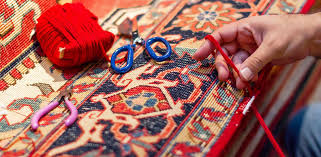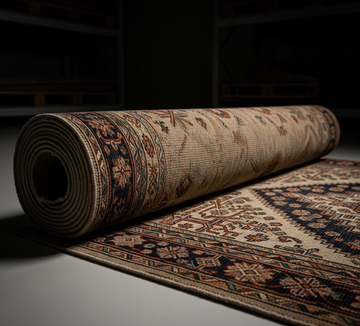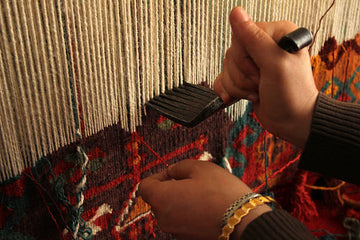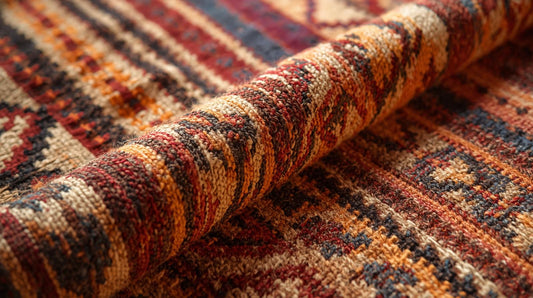The Secrets of Carpet Repair: A Guide to Bringing Your Valuable Carpets Back to Life

The Timeless Value of Carpets and the Importance of Repair
Carpets are fundamental elements that define the warmth, comfort, and aesthetics of living spaces. Over time, due to daily use, accidents, or environmental factors, they can wear out, get damaged, or tear. In such cases, a professional service called carpet repair comes into play. This service not only addresses the physical damage to carpets but also aims to preserve their value and extend their lifespan.
One of the primary goals of carpet repair is to extend the lifespan of carpets and maintain their aesthetic value. A damaged carpet can negatively affect the overall aesthetics of a space; however, with a proper repair process, the carpet's original beauty can be restored. This process not only saves significant costs compared to buying a new carpet but also contributes to environmental sustainability. The renewal and long-term use of carpets help conserve natural resources and reduce waste.
Especially when it comes to hand-knotted and antique carpets, the repair process not only provides an economic benefit but also involves the preservation of a deep cultural and emotional heritage. These carpets are valuable artifacts passed down from generation to generation, and their preservation ensures the transmission of cultural heritage to future generations. The perception of a carpet not merely as an object but as a work of art explains the care and meticulousness shown in the repair process. This approach reveals that repair is much more than a superficial operation. Carpet repair not only meets an immediate need but also offers long-term and multifaceted benefits, transforming it from a simple expense into a valuable investment.
Viewing carpets as works of art indicates that the repair process approaches the disciplines of conservation and restoration. This perspective requires that those performing the repair possess not only technical knowledge but also artistic sensitivity, cultural understanding, and a philosophy of preserving the originality of the piece. This explains why choosing the right expert is critical. An incorrect repair can not only worsen physical damage but also irreversibly harm the carpet's artistic and historical value. Therefore, opting for professional and experienced services means restoring not just the appearance but also the soul of the carpet.
Types of Carpet Damage: Recognizing and Understanding the Problems
Carpets can be damaged over time for various reasons, and correctly identifying these damages is the first and most crucial step in an effective repair process. Each type of damage may require a different approach and expertise.
* Tears and Holes: Tears in carpets negatively affect both their aesthetic appearance and lifespan. Such damages can occur in the middle or at the edges of the carpet. Tear repair is a technique performed by inserting warp threads into the torn areas and tightening weft threads. While small tears can be repaired at home with a sewing needle and appropriate thread , professional expert assistance is recommended for large or complex tears. Practical solutions like carpet repair tape can also offer simple repairs for small tears.
* Burn Marks: Burns caused by cigarette marks or fireplace sparks are common problems in carpets. Such localized damages require special repair techniques.
* Stubborn Stains: Difficult-to-remove stains such as red wine, coffee, ink, or pet accidents can become permanent on carpets. Professional cleaning and repair techniques ensure that stains are removed without leaving a trace, helping to revitalize the carpet. Some stains may require not only cleaning but also color restoration techniques.
* Fringe and Edge Wear: The fringes and edges of carpets can wear out or break over time; these areas are the most subject to abrasion. Fringe repair requires quick correction to prevent the unraveling of the carpet's body and is generally easier and more economical than body repairs. Worn fringes are renewed or repaired. When wear and tears occur at the edges, overlocking can be done; this process strengthens the edges, preventing further wear.
* Moth and Other Pest Damage: Moth damage can be observed as missing threads and color patches in the carpet. It is generally repairable unless it is very severe. Moths prefer humid environments and can significantly shorten the carpet's lifespan.
* Pile Wear and Color Fading: Pile wear resulting from general use of the carpet or colors fading over time also require repair. Minor water damage can usually be repaired, while moldy or rotted carpets may need to be replaced. There is little that can be done about rot. However, even if the damage is irreparable, that section of the carpet can be cut out to save the carpet; although this reduces the carpet's size, it allows it to last longer.
The type and severity of damage directly affect the carpet's repairability and, consequently, its future value. Organic damages such as mold and rot, in particular, can irreversibly degrade the carpet's fiber structure, making repair impossible. In contrast, mechanical damages like tears, holes, or fringe wear can usually be remedied more successfully and economically. This highlights the importance for carpet owners to detect damage early and seek prompt professional intervention, as advancing damage can increase repair costs or lead to the complete loss of the carpet. This also demonstrates why a professional assessment is vital, as experts can determine if the carpet is salvageable and the most appropriate intervention strategy to preserve its value to the highest degree.
Fundamental Methods and Techniques Used in Carpet Repair: Intricacies and Applications
Various techniques are used in carpet repair; these techniques vary depending on the type, texture, and extent of the carpet's damage. Each technique aims to preserve the carpet's integrity and aesthetics.
Tear and Hole Repair: Stitching, Patching, and Weaving Techniques
The torn area is tightly secured to the repair loom with nails and a hammer. Warp threads are waxed and inserted into the missing area, and weft threads are tightened with a crochet hook. This method is based on the principle of recreating the carpet's original texture. For repairing small tears at home, a fine-tipped sewing needle and appropriate colored carpet repair thread can be used; care should be taken to ensure tight and regular stitches. If the tear is large or a more durable repair is desired, sewing tape can be placed under the tear and stitched over.
The patching technique is particularly effective for large tears. In this method, choosing a patch that matches the carpet's color and texture is of great importance. Adhesion methods can also be used, but the quality of the material used is critical for long-term durability; choosing the wrong adhesive can cause further damage to the carpet.
The table below provides a comparative summary of different tear and hole repair techniques:

This table clearly compares when and how different repair methods should be used, helping the reader understand the most suitable method for their situation or what to expect from a professional repairer. This is a valuable tool that supports informed decision-making, rather than just a list of simple methods.
Fringe and Edge Repair: Renewal, Overlocking, and Kilim Binding
The fringes and edges of carpets can wear out or break over time. In such cases, the fringes are renewed or repaired. Fringe repair is done by attaching the warp thread with a needle and beeswax on the repair loom. By weaving the ground part onto the attached warp, the remaining warp ends are secured to the carpet as fringes. This is a meticulous type of repair that requires adherence to the original weaving.
The edges of carpets are among the most worn areas; edge repair addresses damage in these regions. When wear and tears occur at the edges, overlocking can be done; overlocking strengthens the carpet's edges, preventing further wear. Overlocking is performed in accordance with the carpet's original design, between 6-11 mm, using wicking and industrial overlock machines or appropriate colored and high-quality threads for hand-knotted carpets. Kilim binding/edge repair and kilim serging are also among the edge repair techniques.
Color Restoration and Dye Correction: Natural Dyes and Chemical Applications
Areas that have faded or stained over time are restored to their original color using special dyes. Especially in hand-knotted and wool carpets, dye removal and color correction techniques are of great importance. Dye removal should be applied to eliminate problems such as dyes bleeding into each other or fading. It is possible to preserve the carpet's original colors by using the right products. These products are specially formulated to remove color bleeding after washing and restore the carpet's natural colors.
During application, a test should be performed on an inconspicuous corner of the carpet, high temperatures should be avoided, and lukewarm water should be used. Each area should be treated separately to prevent color bleeding. In antique carpet restoration, the natural dyes and colors used in the carpet's original state are analyzed, and then restoration is performed in accordance with the original. If carpets dyed with natural dyes (obtained from plant leaves and insects for cotton and wool carpets) are exposed to shampoos containing chemicals, irreversible results such as color fading and bleeding may occur.
The type of dye in a carpet (natural/vegetable dye or synthetic dye) is a critical factor that directly affects repair and cleaning methods. Especially in carpets with natural dyes, chemical-containing products or incorrect temperature applications can cause color fading or bleeding, reducing the carpet's value. This highlights the importance of dye analysis and material knowledge before repair and provides an additional criterion for expert selection. A skilled restorer will choose gentle and effective methods appropriate for the carpet's dye structure. This not only achieves an aesthetic result but also preserves the carpet's historical and material value, as incorrect intervention can lead to irreversible damage.
Knot Renewal and Pattern Repair: Traditional Knot Types and Applications
In carpet weaving, knots (piles) are tied according to the pattern, and then a pressing and filtering weft is passed over the knot and tightened with a kirkit (beater). After the knotting process is completed in one row, the intermediate sticks are lowered to open the space between the warp threads. Pattern repair is applied to areas with pattern errors; these errors usually occur when the weaver forgets or skips a pattern, and they can be corrected with pattern repair.
Knots form the basis of carpet weaving, and each knot type directly affects the carpet's final texture, pattern, and quality. Below are common carpet knot types and their characteristics:

This table provides in-depth information by explaining different knot types and their effects on the carpet's texture, pattern, and quality. This particularly emphasizes why specific expertise is required for repairing antique or hand-knotted carpets and why it is vital for the repairer to know the carpet's original weaving technique. This information can also help in evaluating a repairer's competence, as the correct knotting technique ensures the repair is invisible and durable.
Moth Damage Repair and Prevention: Cleaning, Fumigation, and Re-weaving
Moth damage can usually be repaired unless it is very severe; missing threads and color patches can be re-woven. This aims to provide a texture and pattern integrity similar to the carpet's original.
Prevention Methods:
* Regular Maintenance: Vacuuming the carpet weekly removes lint, dust, and food residues, eliminating moth larvae. It is important to also vacuum the underside of the carpet by turning it over, as dust can accumulate there. The entire surface of the carpet should be vacuumed daily or at least twice a week, depending on traffic intensity. Carpets should not be beaten or shaken vigorously, as such harsh actions can damage the carpet's structure.
* Sunlight and Ventilation: Occasionally airing the carpet in an open area exposed to sunlight reduces moisture and can kill some harmful organisms through UV exposure. In ventilated homes, avoid placing closed boxes or similar objects under carpets that could trap moisture. Controlling indoor humidity and ensuring ventilation eliminates suitable environments for moth breeding. Storing carpets in a humid environment accelerates moth formation.
* Natural Repellents: Place scented natural substances such as lavender sachets, cedarwood, or horse chestnuts in carpet shelves or closets, ensuring they do not directly contact your carpet. These strong scents deter moths; lavender and cedar are particularly effective as moth repellents. However, this method does not completely eliminate them, only reduces the likelihood of infestation.
* Protective Storage: If you are storing your carpet for a long time, clean it and then store it in an airtight cover. You can place a few moth repellent tablets or naphthalene balls in shoe bags inside the cover. However, chemicals like paradichlorobenzene (mothballs) should be kept away from food and out of reach of children.
* Professional Cleaning: Frequent professional cleaning of your carpets will prevent moth formation. It is recommended to have even unused carpets cleaned at least once a year.
Cleaning and Eradication Methods:
* Physical Cleaning: Taking the carpet outside and shaking or beating it removes surface larvae and loose fibers. Deep vacuuming: Vacuuming the carpet several times, without missing any corners, thoroughly cleans surface residues. Move the vacuum head slowly across the carpet and change the vacuum's extra filter bag if necessary. Turning the carpet over and vacuuming between its underside and the floor removes dust and larval residues underneath, reducing the risk of re-infestation.
* Heat and Moisture Applications: Steam cleaning: High-temperature steam kills microorganisms and pests in the carpet. Ensure the carpet is thoroughly dry after steam cleaning. Washing with hot water and brushing is effective in killing moth larvae.
* Chemical and Natural Solutions: A mixture of baking soda and vinegar water can help disinfect areas where moths are present. Washing carpets with carpet shampoo will eliminate moths and their eggs in the carpet. Setting up moth traps can interrupt the breeding cycle by using special pheromones to attract male moths. Using moth insecticide: If the carpet beetle problem is severe, an effective fight can be waged using a Ministry of Health-approved carpet moth insecticide. However, it is important to read the labels carefully before using such products.
* Professional Help: If the moth problem has reached a large scale, obtaining a professional pest control service may be the most effective solution. Experts can offer customized solutions to control moth infestation.
* Drying and Sunning: After cleaning, thoroughly dry the carpet and leave it to dry in a sunny, airy place for 1-2 days; this ensures no moisture remains and any potential moths die.
Moth damage repair requires not only addressing existing damage but also an Integrated Pest Management (IPM) approach to prevent future infestations. This refers to a combination of multiple strategies such as regular cleaning, proper storage, humidity control, natural and chemical measures, and professional intervention when necessary. This holistic approach is critical for the long-term preservation of the carpet and offers the reader not just a repair but also a protection plan. This encourages carpet owners to move from being passive recipients of repair to active protectors.
Professional Carpet Repair Process: A Step-by-Step Expert Approach
Carpet repair is a process that requires expertise and experience. It should be performed in accordance with the carpet's structure and type. After repair, the carpet's integrity should not be compromised, and there should be no noticeable difference between the repaired area and other areas.
Damage Assessment and Detailed Analysis
Before starting the repair process, the carpet is carefully washed. A clean carpet helps to fully reveal colors and accurately identify damage. In professional carpet cleaning factories, carpets are first placed in a dust removal cabinet (for approximately 20-30 minutes). This process ensures that the carpet is freed from dust and debris. After the dust removal process, carpets are washed and rinsed using fully automatic machines. Great care and attention must be shown during the washing process. After the washing and squeezing process, carpets are separated by type and sent to squeezing machines; during this process, approximately 90% to 95% of the water is squeezed out of the carpets, and no wear occurs.
Thorough and professional cleaning of the carpet before repair not only ensures hygiene but also allows for accurate identification of damage and colors. Dirt and dust can obscure the true extent of damage or misleadingly alter color tones. Therefore, cleaning is a fundamental prerequisite for accurate analysis and successful repair. This explains why professional service differs from and is superior to superficial home cleaning, and it is one of the first and most critical steps in the repair process. After cleaning, the carpet's damage is examined, and a detailed plan for the repair process is made. This step is critically important for the success of the repair process.
Material Selection and Preparation: Yarns, Dyes, and Tools
Yarns and other materials suitable for the carpet's original texture and color are procured. This selection ensures that the repair is natural and inconspicuous.
* Yarns: 100% wool, silk, and cotton are commonly used in hand weaving. Silk and wool yarns are preferred in carpet making. The type of yarn varies according to the weaving example to be restored; various yarn types such as silk, cotton, wool, mohair, horsehair, and linen can be used.
* Dyes: Yarns colored with vegetable dyes enhance the quality of the carpet. The dyeing property of vegetable dyes on cotton yarn is lower than on wool. Cream of tartar, which helps the dye in the dye bath to be absorbed by the fiber, gives brightness and clarity to colors. Sodium sulfate is an auxiliary substance that ensures the complete transfer of the dye to the wool. Oxalic acid is used in mordanting and to obtain red color tones.
* Tools: Special tools used in carpet repair demonstrate how much expertise the process requires. These include pliers (for passing the needle during warp insertion), carpet scissors (for cutting pile ends), blowtorch (for burning off thread ends after restoration), kirkit (for tightening wefts), Persian scissors (for carving), crochet hook (for inserting wefts and tying knots), needle (for fringe attachment, pile insertion), nails (for securing weaves to the loom), frame repair loom (for repair), iron (after processing), beeswax (to prevent threads from slipping and to tighten them), stapler (for stapling weaves to a wooden surface), and shaver (for leveling pile height).
Professional carpet repair requires not only technical skill but also in-depth material knowledge. Understanding the carpet's original yarn and dye structure, selecting the correct repair materials, and ensuring their compatibility with the carpet are vital for the success of the repair. Incorrect material selection can shorten the carpet's lifespan or disrupt its aesthetic integrity. The use of dyeing auxiliaries also indicates a chemical and scientific aspect of the process. This reveals that an expert must know not only "how" to repair but also "with what" to repair. This level of knowledge and precision is the fundamental factor distinguishing professional service from amateur interventions.
Meticulous Execution of the Repair Process
The carpet repair process begins in accordance with the weaving technique and yarn twist. This stage requires great care and meticulousness. Techniques used in carpet repair include tear repair , fringe repair , edge repair , hole repair , color restoration , and pattern repair. Each process is customized according to the carpet's unique structure and the nature of the damage. After the repaired carpet weave is secured to the floor with staples, its surface is cleaned with a shaver; this ensures that the pile height on every part of the weave is of equal length. The back of the weaves with leveled pile height is cleaned by burning with a blowtorch.
Final Inspection and Maintenance
After the repair is completed, the carpet undergoes a general inspection, and additional maintenance is performed if necessary. After the drying process, carpets are taken to the production looms for inspection. Carpets that pass quality control undergo special treatments if needed, are freed from stains, and are aired for a certain period. These final touches ensure that the repair is flawless both visually and tactilely.
Special Approaches: Antique Carpet Restoration and the Preservation of Cultural Heritage (with the example of Sultanhanı)
Antique carpet restoration is undertaken by expert artisans and restorers with fine craftsmanship. These carpets are a heritage passed down from generation to generation and are of great importance for the preservation of cultural heritage. During the restoration process, the yarns, weaving technique, natural dyes, and colors used in the carpet's original state are first analyzed. Then, restoration processes are carried out in accordance with the original, making them ready for use. Conservation techniques aim to preserve the object's original color, brightness, and texture as much as possible.
Sultanhanı Town in Aksaray is world-renowned for its carpet restoration and caravanserai. Sultanhanı, which houses the world's largest caravanserai dating back to the Seljuks, has become a brand as the "World's Carpet Restoration Center" due to its carpet restoration activities. Sultanhanı entered the carpet industry in the 1970s with hand-knotted carpet production and restoration, expanding internationally from the 1990s onwards. When negatively affected by the entry of Far Eastern countries into the carpet sector, businesses shifted their focus from production to carpet restoration, utilizing their experience in this field.
In Sultanhanı, thousands of masters and apprentices work in approximately 50 small and large carpet workshops. Thousands of young people are trained as master artists, starting from apprenticeships. Therefore, Sultanhanı can also be called "the world's largest and most modern carpet restoration university". Worn carpets are brought to Sultanhanı for repair from many countries, especially Germany, England, and the USA; numerous historical carpets belonging to the British royal family and over 100 historical carpets from Dolmabahçe Palace have been restored here. This demonstrates how important Sultanhanı is as an international center.
Carpet restoration, especially concerning antique and hand-knotted carpets, is more than just a repair service; it is a global cultural heritage preservation activity. Centers like Sultanhanı play a vital role in preserving and transmitting the knowledge and master-apprentice tradition in this field to future generations. Furthermore, their adaptation to global market dynamics (Far Eastern competition) by shifting from production to restoration proves that cultural heritage preservation can also be an economic niche and a sustainable business model. This shows that carpet repair not only has economic value but also makes an invaluable contribution to the preservation of human history and art, deepening the reader's perspective on their carpets and helping them better understand the importance of professional restoration.
What to Consider in Carpet Repair: Tips for Making the Right Decisions
Carpet repair is a delicate process, and certain critical points must be considered to ensure your carpet's longevity and preserve its value.
Importance of Expert Selection and Reliability
Ensure that the person or institution you choose to repair your carpet is experienced and expert in this field. Incorrect repair can cause further damage to your carpet and even lead to irreversible harm. Professional teams aim to restore carpets to their original state using the highest quality materials and modern techniques. Although there are several carpet repair companies in the sector, expert companies promise to keep your carpets safe. The restoration of hand-knotted carpets, which are a cultural bridge between generations, undoubtedly requires expertise , reinforcing the importance of choosing the right expert.
Choosing an expert for carpet repair not only ensures a good result but also manages potential risks. Intervention by someone lacking sufficient knowledge or experience can lead to irreversible damage to the carpet, loss of its aesthetic and material value, and even render it completely unusable. Therefore, expert selection is not a cost but a strategic investment that preserves the carpet's value and prevents future additional expenses. Companies offering guarantees reinforce their reliability as part of this risk management and provide additional assurance to the customer.
Material Quality and Adherence to Originality
The quality of the yarns and other materials to be used during repair directly affects your carpet's lifespan and appearance. Low-quality or unsuitable materials can lead to short-lived repairs or aesthetic defects. It is important that the yarns used in the carpet's texture match the original; otherwise, the carpet may have an uneven appearance after repair. This also includes texture and thickness compatibility. The repaired area should not differ in color from other parts of the carpet. Therefore, the correct shade of yarn must be chosen. In antique carpet restoration, the yarns, weaving technique, natural dyes, and colors used in the carpet's original state are analyzed, and then restoration is performed in accordance with the original. This is one of the fundamental principles of restoration.
Material selection in carpet repair is not just a technical decision but also reflects a restoration philosophy. Adherence to originality expresses the effort to preserve the carpet's historical, artistic, and cultural integrity. This is one of the fundamental principles of modern textile conservation. Even if it is sometimes necessary to deviate from reversible procedures, the goal is always to transmit the work to future generations in its original form. This ethical approach shows that a professional restorer not only remedies the damage but also preserves the spirit and value of the work. This helps the reader understand the depth of professional service and reveals the difference between an ordinary repair and true restoration.
Repair Duration and the Need for Patience
Some repair processes, especially detailed restorations and for hand-knotted carpets, can take time. Be patient in this regard and do not rush. Quality craftsmanship cannot be rushed, and it is important to allow the necessary time to preserve your carpet's value.
Tips for Extending Your Carpet's Lifespan: Maintenance and Protection Guide
Regular maintenance should be performed to ensure the repaired carpet's longevity and prevent new damage. Proactive maintenance is key to preserving your carpet's beauty and value for years.
Regular Cleaning and Professional Washing
Regularly vacuuming your carpets with a high-suction, preferably brush-equipped, vacuum cleaner is effective in eliminating moth larvae and eggs. The entire surface of the carpet should be vacuumed daily or at least twice a week, depending on traffic intensity. Vacuuming should be done slowly and in the direction of the carpet's pile threads. It is also important to vacuum the underside of the carpet by turning it over; dust can accumulate there. Carpets should not be beaten or shaken vigorously, as such harsh actions can damage the carpet's structure.
Frequent professional cleaning of your carpets will prevent moth formation. It is recommended to have even unused carpets professionally cleaned at least once a year. The professional carpet cleaning process is carried out according to the carpet's type and characteristics and includes dust removal, brushing (with manual or automatic machines), rinsing with a squeegee, and squeezing stages. These processes ensure deep cleaning of the carpet and extend its lifespan.
Humidity and Ventilation Control
Controlling indoor humidity and ensuring ventilation eliminates suitable environments for moth breeding. Storing carpets in a humid environment accelerates moth formation. Occasionally airing your carpet in an open area exposed to sunlight reduces moisture and can kill some harmful organisms through UV exposure.
Natural Repellents and Moth Prevention
Placing scented natural substances such as lavender sachets, cedarwood, or horse chestnuts in carpet shelves or closets, ensuring they do not directly contact your carpet, deters moths; lavender and cedar are particularly effective as moth repellents. However, this method does not completely eliminate them, only reduces the likelihood of infestation. If you are storing your carpet for a long time, clean it and then store it in an airtight cover. You can place a few moth repellent tablets or naphthalene balls in shoe bags inside the cover. However, chemicals like paradichlorobenzene (mothballs) should be kept away from food and out of reach of children.
Conclusion and Recommendations
Carpet repair is a multifaceted process that goes beyond merely bringing worn or damaged carpets back to life, contributing to the preservation of cultural heritage, the sustainability of economic value, and environmental sustainability. The perception of each carpet as a work of art forms the basis of the care and meticulousness shown in the repair process. Correctly identifying the type of damage, determining appropriate techniques, and adhering to original materials are key to a successful repair.
Professional carpet repair is a field requiring expertise that combines in-depth material knowledge, mastery of traditional weaving techniques, and modern conservation principles. Especially the restoration of antique and hand-knotted carpets is a global cultural preservation activity carried out in internationally recognized centers like Sultanhanı. Since incorrect interventions can irreversibly damage the carpet's value, expert selection is of vital importance.
Regular maintenance and protective measures are crucial for extending your carpet's lifespan and preventing future damage. Regular vacuuming, humidity control, proper storage, and periodic professional cleaning will help preserve your carpet's beauty and durability for years. Adopting an integrated approach to combat pests like moths is a critical step for your carpet's long-term health. It should be remembered that carpet repair is not just a repair but also a valuable cultural and economic investment.
No comments







0 comments